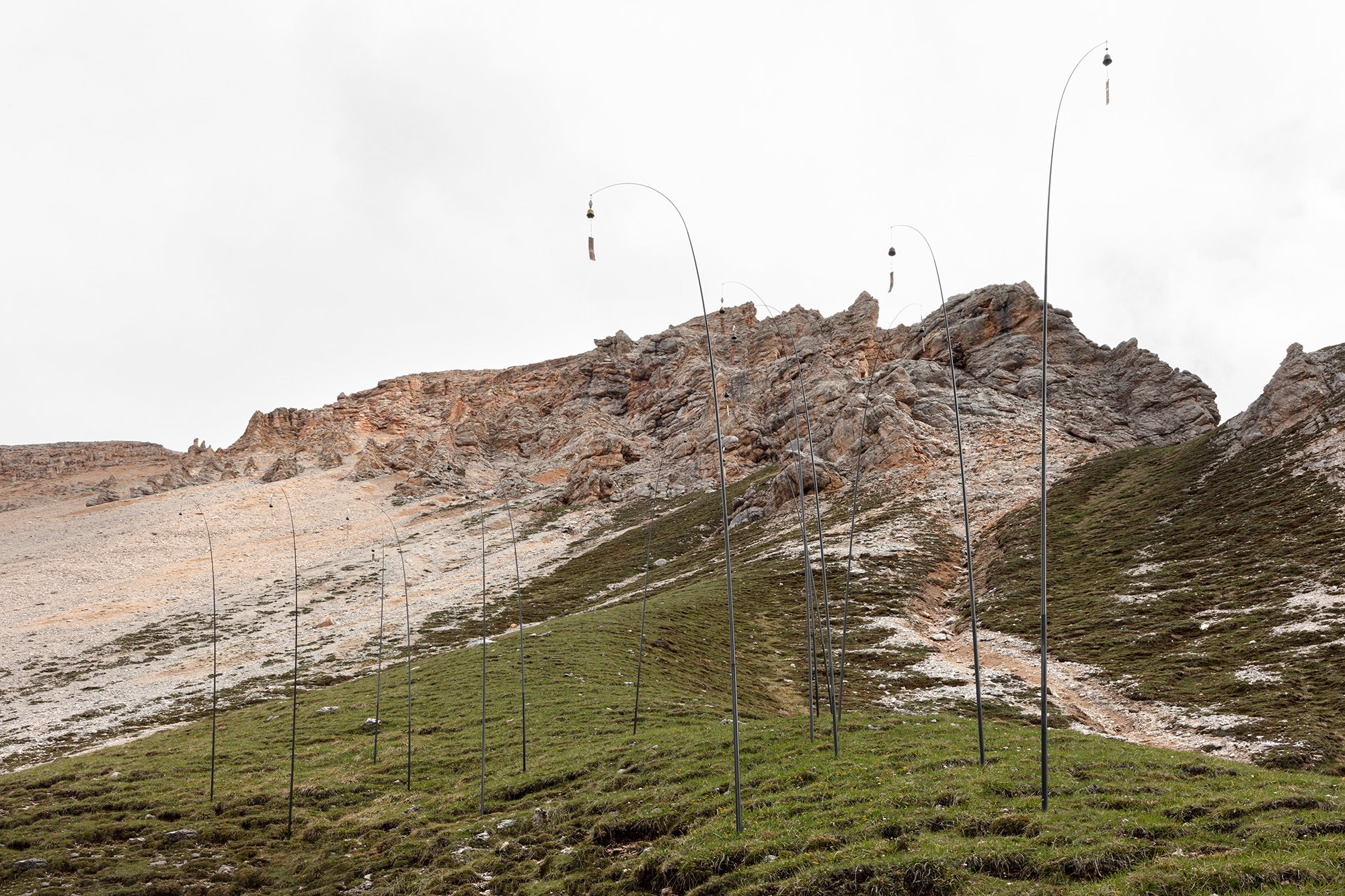The Flying Herd
Kg Augenstern (Christiane Prehn, Wolfgang Meyer)
An ancient Ladin tale recounts how a nomadic shepherd had reached this location with his herd. He’d asked the locals if his herd could graze here, however they wanted to get rid him, and sent him up the mountains where he’d find lush, green pastures. Yet it was a lie, as nothing grew that high. They were about to die when a gana, a female water nymph, appeared and created a spring out of thin air for them. The installation is located on the path crossing the gravelly climb to Passo di Sant’Antonio, with little to no vegetation in sight. The bells sway in the wind, and their chime merges with the barely audible cowbells from below. A soundscape reminiscent of the legend and a reminder of the importance of water to sustain life.


Exhibit place Ju de Sant Antone
Ju de Sant Antone is a transhumance area, i.e. a seasonal movement of livestock between higher pastures in summer and lower valleys in winter. It is such an ancient phenomenon that in 2019, the UNESCO recognised it as Intangible Cultural Heritage, meaning a practice, representation, expression, knowledge, or skill considered to be part of a place's cultural heritage.











